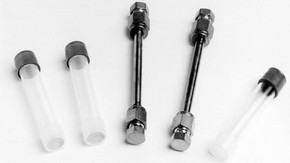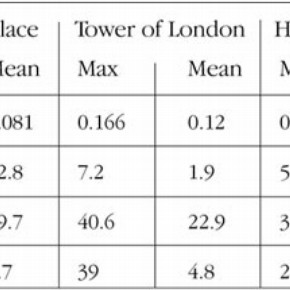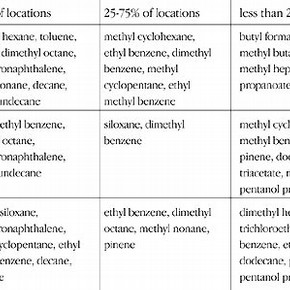Conservation Journal
October 1997 Issue 25
Pollution Monitoring Within the Historic Royal Palaces
The success of the Assessment and Monitoring of the Environment of Cultural Property (AMECP) project has been widely reported1. One of the most significant and interesting aspects of this project was establishing and implementing various monitoring regimes for pollutants, including volatile organic compounds (VOCs), sulphur dioxide (SO2) and nitrogen dioxide (NO2).
Obviously it takes a long time to set up such methodologies and such an exercise would never have come within the remit of the Historic Royal Palaces Group (HRPG). The HRPG had followed the progress of the monitoring with interest and thought that it would be beneficial to carry out a similar survey within our organisation. We were not aware of any major pollution problems but this was not an aspect of conservation that had been actively investigated to any extent in the past. At the end of the AMECP project there was a period where all of the regimes were in place and therefore it was suggested that a joint project with the V&A be established. They had the necessary expertise and contacts whilst we had the funding.
The aim was to highlight any specific problems of which we were not yet aware, whilst at the same time enable a comparison of the environment at three main sites, the Tower of London, Hampton Court Palace and Kensington Palace. The survey was to measure hydrogen sulphide (H2S), chloride (Cl-), SO2, NO2 and VOCs at these quite different locations during spring 1996. In order to achieve this, sampling tubes were placed at each of the three palaces, in display and storage areas as well as externally (Figure 1).
The samplers were in situ for four to six weeks and on collection it was noted that a number of incidents had occurred. Some of the tubes had gone missing, one of them (at Hampton Court Palace) had been relocated to the Ladies' Public Toilets, and one of the metal VOC samplers had been mysteriously bent in a Uri Geller-style transformation.
The analysis for H2S, SO2, NO2 and Cl- gave the very encouraging result that with these pollutants there was no particular cause for concern (Table 1). The results were very much in line with the results found at other institutions2 . For instance, showcases had lower SO2 levels than the rooms they were in, and the rooms had lower levels than outside. The levels of NO2 were similar regardless of locale. The air-conditioned areas did not appear to give any additional protection from pollutants, and in one air-conditioned room only the levels of H2S were lower than the external values. Also there was little palace-to-palace differential with only slightly higher levels of pollutants at The Tower of London. Despite Hampton Court's semi-rural environment it was not significantly less polluted than the two city centre locations.
There were two outliers. The external SO2 level at Kensington Palace appeared to be at least an order of magnitude greater than at any other location. However, the sampling tube had fallen from its mount during the monitoring period and could easily have become contaminated. The second outlier was an unexpectedly high level of chloride in one location at The Tower of London. The only suggestion that has been made to explain this is that a local air-conditioning cooler is periodically sterilized with a chlorine-containing chemical.
The analysis for the VOCs was limited to the ten most prevalent compounds and acetic acid was not measurable with the selected technique. The results showed a variable qualitative and quantitative make up (Table 2). The VOC tubes were placed at the sites in pairs, but the results were difficult to interpret due to a variable the level of agreement. Also propanetriol triacetate was identified in 20% of the locations and as yet there is no explanation for this.
It is always less dramatic to get 'ordinary' results from any monitoring exercise. However, in this case the lack of significant problems was particularly welcome as it would undoubtedly be both difficult and expensive to reduce any large scale pollution problem at these sites. The results may have significant future use if for any reason we feel that a particular location has a new pollution problem. Then we will be able to use these data as a baseline from which any future deviation will be apparent.
Acknowledgements
The authors would like to thank the following for their input to the project: Dr N. Blades (now at University of East Anglia), G. Martin (Head of Conservation Research, V&A) and C. Allington (Housekeeper of Historic Royal Palaces).
Also we acknowledge the work carried out by Dr S. Watts (Oxford Brookes University), Gradko Ltd and G. Lawson (De Montfort University) for this study.
References
October 1997 Issue 25
- Editorial
- Hearing the Original Instrument
- Preparations for 'Carl and Karin Larsson: Creators of the Swedish Style'
- Showcases - An External Perspective
- Pollution Monitoring Within the Historic Royal Palaces
- Conservation on the Internet: Practicalities and Possibilities
- Questions and Answers: Review of 'The Interface Between Science and Conservation'
- Conservation Under the Microscope: Two Reviews of RCA/V&A Conservation 1997
- Postcards From Paris
- Printer Friendly Version


